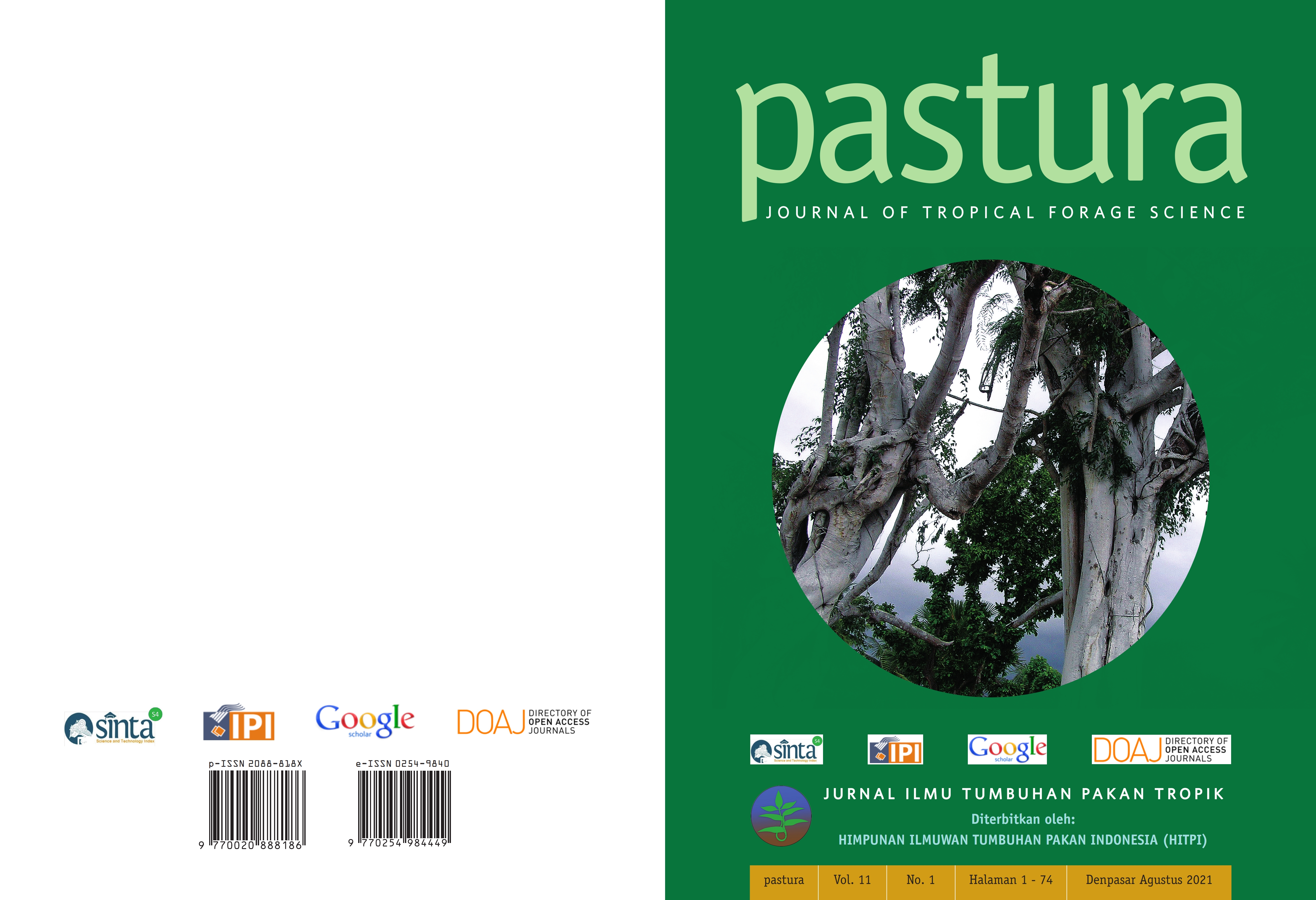PERTUMBUHAN INDIGOFERA (Indigofera zollingeriana) SETELAH PEMANGKASAN DI LAHAN GAMBUT
Abstract
Penelitian ini bertujuan untuk mengetahui pertumbuhan dan produksi segar biomasa Indigofera zollingeriana
yang tumbuh di lahan gambut bertipe saprik pada umur 2, 3 dan 4 bulan setelah pemangkasan. Rancangan yang digunakan pada penelitian ini adalah rancangan acak kelompok (RAK) yang terdiri dari 3 perlakuan dan 4 kelompok. Perlakuan adalah biomasa indigofera yang dipanen pada umur 2 bulan (2B), 3 bulan (3B) dan umur 4 bulan (4B). Data hasil penelitian menunjukkan bahwa semakin tua umur pemangkasan maka panjang ranting, jumlah daun, rasio daun/ranting, produksi segar dan kandungan bahan kering indigofera semakin meningkat. Panjang ranting indigofera pada 2B, 3B dan 4B berturut-turut adalah 52,23 cm, 99.01 cm dan 132,12 cm. Jumlah daun indigofera pada 2B yaitu 1.648,1 helai, kemudian meningkat pada 3B yaitu 4.424,8 helai dan pada 4B yaitu 11.310,1 helai. Persentase daun meningkat dari 31,7% (2B) menjadi 44% (4B), sedangkan persentase ranting menurun dari 68,3% (2B) menjadi 56% (4B). Rataan produksi segar tanaman indigofera per pohon pada 2B, 3B, dan 4B berturut-turut yaitu 542,7 g/pohon, 1.173,9 g/pohon, dan 2.858,8 g/pohon. Kandungan bahan kering indigofera pada 2B yaitu sebesar 13,25%, pada 3B yaitu 14,76%, dan pada 4B yaitu 15,76%. Berdasarkan data hasil penelitian dapat disimpulkan bahwa Indigofera zollingeriana dapat tumbuh dengan baik pada tanah gambut tipe saprik. Produksi tertinggi biomasa Indigofera zollingeriana berdasarkan hasil penelitian ini adalah pada umur 4 bulan setelah pemangkasan.
Kata kunci: Indigofera zollingeriana, gambut, umur pertumbuhan kembali





